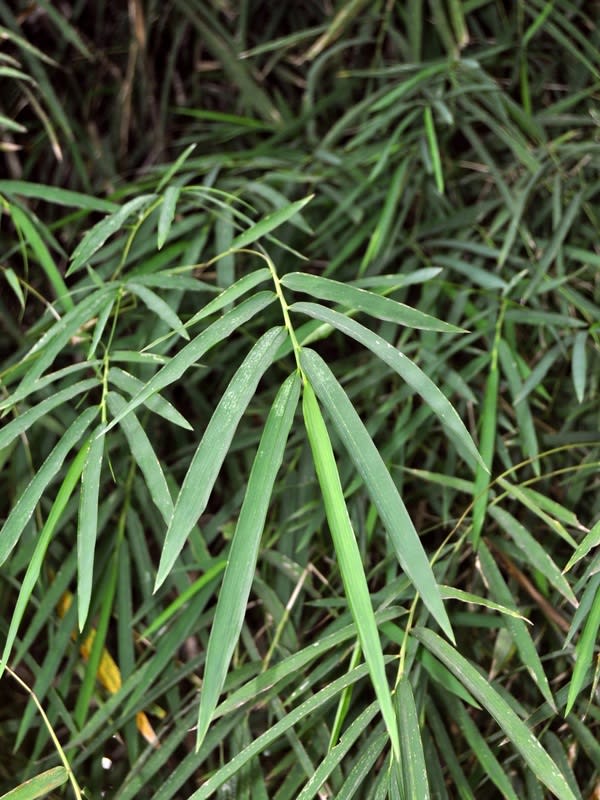Bamboo, Umbrella Bamboo, Monastery Bamboo, Thai Bamboo, Siamese Bamboo
Thyrsostachys siamensis

🌿 Morphology
🌞 Growing conditions
🌍 Origin and family
🌾 Uses
Warning: Despite the care taken in writing this sheet, it is essential to cross-reference sources before using or consuming any plant. When in doubt, consult a qualified professional
Permaculture uses
Edible shoots are harvested for food, primarily in Southeast Asia. The culms are used for construction, furniture, and handicrafts. It is a fast-growing and clumping bamboo, making it useful for erosion control and windbreaks. The leaves can be used as fodder.
Permapeople description
Thyrsostachys siamensis, also known as monastery bamboo, is a species of bamboo native to Southeast Asia. It is used for construction, weaving, and food.
Botanical description
Thyrsostachys siamensis is a sympodial (clumping) bamboo species native to Southeast Asia. It typically grows to a height of 10-15 meters with a culm diameter of 5-8 cm. Culms are straight, thin-walled, and greenish-grey when young, turning yellowish-brown with age. Branches are numerous and leafy. Leaves are lanceolate, typically 10-20 cm long and 1-2 cm wide. The inflorescence is a large, terminal panicle. This species flowers infrequently, typically every 30-60 years.
Companion planting
Generally a good companion plant for nitrogen-fixing trees and shrubs. Avoid planting near plants sensitive to root competition, as it can form dense clumps. Can provide shade and wind protection for more delicate plants. No specific antagonistic relationships are widely reported.
Propagation methods
Primarily propagated by division of rhizomes. Seed propagation is possible but rare due to infrequent flowering. Culm cuttings with rhizome attached can also be used, although less reliable than division. Tissue culture is also used for commercial propagation.
History and traditions
Traditionally used for construction in Thailand and other Southeast Asian countries, particularly in temples and monasteries, hence the name 'Monastery Bamboo'. The shoots are a common food source in the region. Its drought tolerance makes it a valuable resource in areas with seasonal rainfall.
Usage calendar
Shoots are harvested during the rainy season (May-October). Culm harvesting can occur year-round, but is often done during the dry season for ease of access and reduced moisture content. Planting is best done at the beginning of the rainy season. Flowering is rare and unpredictable.
